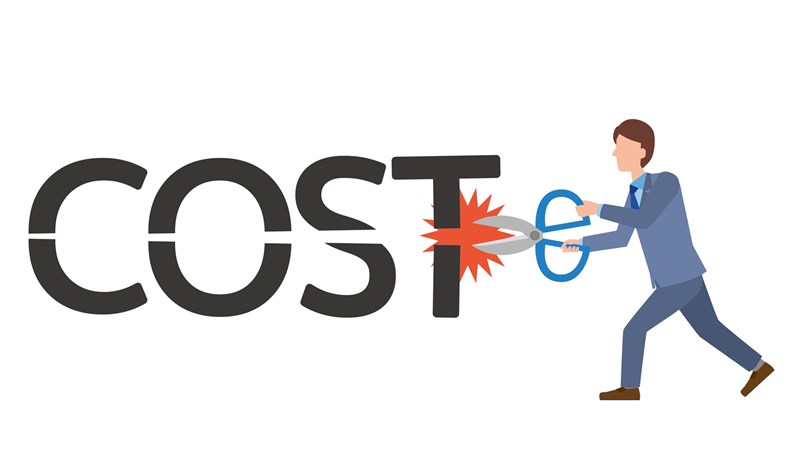With inflation and supply chain disruptions dominating much of the news these days, multifamily boards and managers are feeling the squeeze, whether in the form of rising prices for necessary supplies, or lack of those supplies altogether, or both. Boards are always looking for ways to make their associations’ dollars go farther, but that’s especially true now.
A Long Recovery
Boards are still reeling from the economic consequences of a post-COVID world. “Their budget and income was thrown to the wind because some residents didn’t pay their maintenance fees almost through the entire pandemic,” says Stephen Buch, a broker at Yale Kent in Union, and a third-generation property manager primarily managing residential buildings and mixed-use properties. In addition, Buch explains that the cost of supplies has increased, cleaning budgets have skyrocketed, and wages have gone up, adding to the strain on budgets.
Sara Miller manages 21 small- to medium-sized condo associations with Atlantic Management in Secaucus, ranging from six to 75 units, and says that they each have their own unique set of challenges when it comes to managing their expenses. “When you have less people contributing to the maintenance pool, you have to keep an eye on every penny,” says Miller.
Determining how those pennies are spent is especially important during lean times, or when an unexpected emergency strikes. “Sometimes there is an unexpected capital expenditure that the board didn’t have enough cash to cover, and there’s only so much that they can raise the assessment,” says Edward Nisanov, owner of Brooklyn-based Nisanov Tax Group in New York who has clients in New Jersey and owns a multifamily property as well. “But they still need to cut costs or raise money.”
“It’s not like the board can just suddenly decide to sell more widgets,” says Buch. “They have no choice but to impose higher dues, which is an unpopular challenge because they don’t have the money they need to, say, fix the roof.”
Start with the Basics
When anyone is looking to improve their financial situation, the first step is to figure out where their money is going by writing out a budget and examining their spending and saving habits. Managing a building’s money is much the same.
“I don’t hear a ton of pushback about trying to operate lean, because we try to get a good sense of the overhead and mandatory expenses of the building from the beginning,” says Nisanov.
So before looking for ways to cut corners, Nisanov says that boards and property managers should comprehensively review all of the building’s financials. Knowing where the money is being spent makes it easier to know what holes can be plugged.
“We start by looking at the monthly maintenance fees that they’re already collecting from their occupants,” he continues, “and the mortgage, and what they are spending money on, like capital improvements. Where is the money going each month? If the boards are raising the fees every month, it’s important to know whether they’re doing it out of necessity, or because they aren’t managing the property correctly.”
Put on Your Thinking Cap
Once you’ve done an exhaustive study of the building’s monthly financials, it’s time to think of creative cost-cutting strategies. Costs should always be at the forefront of a successful property manager’s mind, and there may come a time when you have to tighten the budget. Miller says that she’s always thinking of out-of-the-box ways to save money—not just when money gets tight.
“I love a good ‘water day,’” she says. “Periodically, I schedule a maintenance tech or superintendent, typically on a Saturday, to enter every unit to inspect that there are no leaking faucets, toilets running, etc. You can’t believe how much the association’s water bill can increase with one running toilet!”
If the maintenance crew finds an issue that can be easily remedied during the inspection, the supers will fix it on the spot. “The association pays for these repairs, which would normally be the unit owners’ responsibility,” says Miller. “In the end, the association will save hundreds, if not thousands, of dollars.”
Every spring, Miller also plans a community planting day. “We buy bulk flats of flowers in the spring, and the community comes together and plants them around the property,” she explains. “The property gets a spring beautification, which the residents really enjoy, and the association saves on the labor costs from the landscapers. It has really worked out well.”
Vendor Victories
Another way of cutting costs is to review the arrangements you have with vendors. Both Miller and Nisanov agree that maintaining these relationships over the long haul is key to keeping costs down. “When you’re dealing with entities that have been around for years, you’re hopefully already getting a good price on everything that you’re doing,” says Nisanov.
When it’s time to renew a contract, do your due diligence and shop around to see how much you can save by switching vendors. For example, it’s springtime and you have been chatting with a property manager of another building in town. You discover that your landscaping contract is a little pricey compared to others in the area. So you do research and find a great new vendor who is less expensive than the one you use now, but who provides the same quality service. You can ask your current vendor to match the new lower offer, or choose not to renew the contract and hire the new company, saving hundreds or thousands of dollars per year.
Or, if you’re looking for immediate savings, there is the option of temporarily freezing some services, such as landscaping visits or other ‘luxuries.’ Before doing so, however, keep in mind that cutting back might have some detrimental effects, including reducing resident morale, or eroding the building’s curb appeal and even its property value.
“If cutting back on vendors affects the operations or the visual appeal of the building, I do not recommend doing it,” says Nisanov. “You do not want a building that looks run-down, and you also want to ensure that your residents are happy. When residents buy or rent a property and pay maintenance fees, they always expect the hallways to look great. If there is wallpaper, they do not want it peeling off and they want the floors and carpets always to be in great condition and the elevators always working. If you try to cut costs to the point where the building is visually unpleasant, it will bring down the property value and you will have residents who want to leave.”
So where else can you cut expenses without upsetting owners and shareholders?
“The first places would be social amenities, such as pools and gyms and things like that,” says Buch. “They are not as much of a necessity; they’re a nice perk. You can reduce the hours of operation so you can save salaries, or hold off on buying new equipment, etc. It’s also expensive to have a gardener come every week and make everything look pretty.”
Buch explains that if a building is planting flowers every year and skips doing it for a year or two, it will not affect the board’s income immediately, but it will help them save money on paying a gardener. “Cutting back on a landscaper now might affect resale value down the road, but if the board doesn’t spend a penny on amenities or curb appeal, they won’t lose any money from it now, they’ll just be saving money,” he explains.
Buch has also seen buildings work together with neighbors to hire the same snow removal or landscaping vendors to work on the properties as a group. “They’ve saved up to 15% by combining the services for a regional group of properties,” he says. “I’ve even seen properties share supers, or if they have hired someone full-time, they cut back by going with part-timers. We have also been able to save a little bit of money on concierge and front desk time by using lock boxes for deliveries instead of having personnel take them.”
Bigger Moves, Bigger Savings
Buch explains that if a building needs to save even more money, the board should consider upgrading the building’s technology with things like smart thermostats and water sensors.
“For example, once the technology has been installed to monitor how much water each unit is using, you can get real-time alerts if there is a leak, or someone has forgotten to turn off the water,” he explains. “These systems are smart enough to turn off the water after a predefined period of time and can save a lot of money. This is equipment that you can buy online.”
When money is truly tight, boards may need to reconsider any capital projects they’ve had on the schedule. Consider what is the most important to do and wait a bit to see if things improve before you continue.
Unfortunately, just cutting back expenses may not be enough. There might be a time that you need to raise extra cash to help the building’s bottom line. According to Melissa Prandi, the author of The Complete Idiot’s Guide to Success as a Property Manager, some ideas include: making vacant parking spaces available for rent; renting out the property’s community center to local businesses or individuals needing meeting or party space; renting out the building’s roof space for meetings or party space; selling advertising space to local businesses in your community newsletter or on association websites; and increasing your laundry room rates.
Finally, finances are a very important aspect of property management, so be sure to ask for professional advice when you need it. If something looks wrong, or the numbers just aren’t adding up, don’t wait for the situation to deteriorate; ask for advice or make some changes. Don’t hide the problems or neglect them. It will cost you even more money in the long run.
Lisa Iannucci is a writer/reporter for CooperatorNews.










Leave a Comment